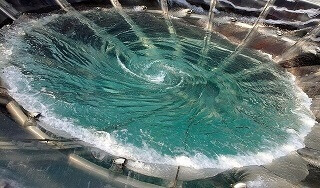What is Vortexing?
What is Vortexing?
Vortexing is when a pump begins to draw air from the surface of a liquid, forming a visible vortex at the top of a liquid. This creates a combined flow of air and fluid to enter the pump resulting in turbulent flow, causing a reduction of flow at the outlet of the pump.
The visual effect is similar to when water drains through a plug when a bath or sink empties, and the sound can be similar to cavitation although a completely separate issue.
Vortexing can be prevented by ensuring suction tanks are correctly sized for the amount of fluid being pumped. Suction tanks should ideally contain 6-10 times more volume than that of the flow rate required. So for example if a flow rate of 100L/min is expected, tanks should contain at least 600-1000L of fluid. Pump inlet pipes require a minimum amount of submergence below a fluids surface to avoid vortex formation.
If levels within the inlet tank are still likely to cause issues, an Anti-Vortex plate could be a solution which prevents the pump from drawing air from the surface.
How does a vortex plate work?
A vortex plate is a specially designed metal plate which prevents a pump from creating vortices on the surface of a liquid. The presence of the plate ensures water is drawn from around it, reducing liquid speed, meaning flow is laminar.
What is a vortex baffle?
Vortex Baffles can be used within a tank to create a sectioned area preventing air which becomes entrained in tank water from inflow pipes. Baffles are placed in offset positions to ensure air is released and dissipated with any particles settling away from the pump inlet.
To learn more, view a video on vortex formation, and how it alters with liquid levels see: https://www.youtube.com/watch?v=fyCxcpxoirc




